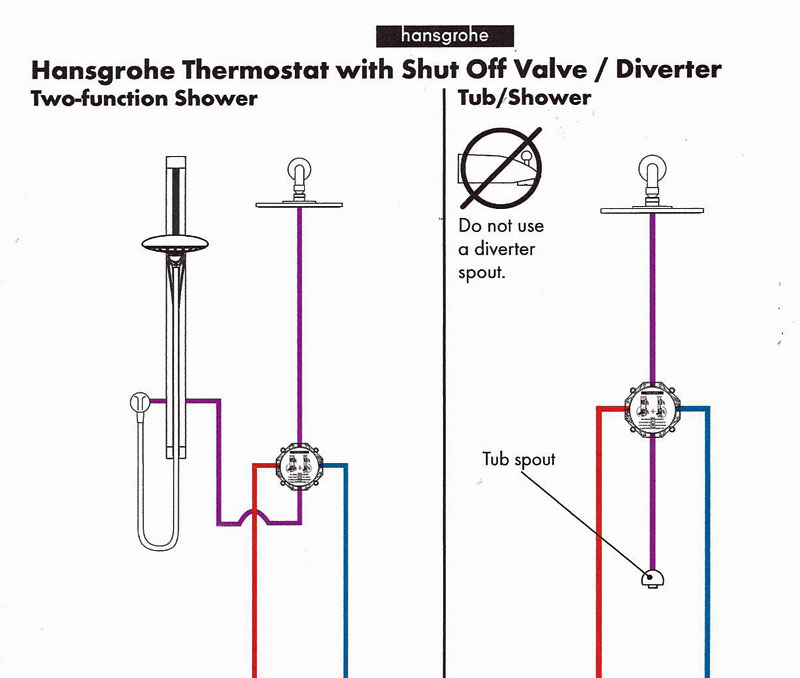Plumbnewbiehl
New Member
I'm not a professional at all and I'm looking at all the piping with our remodel and I'm a bit worried that my plumber may not know what he's doing. I did a rough drawing of how my plumber did the valves and piping.
So the issue is that my trim has only two diverters which is usually for the handshower and the headshower. Since this is for my guest/kids bathroom, i would want a tub spout, handshower, and headshower. I would think that it's doable if i get a tub spout diverter with the two trim diverter.
My plumber said it's doable if we split the headshower pipe and tub spout with one and the handshower on two. When we turn on the water, the water will goto the tubspout and when we pull the tub spout diverter, the water will come out of the headshower. I understood all of that which was nice and easy.
Now with the confusing part, i don't understand why they did a split on the top portion of the valve for tub and headshower. So there is a T-valve that splits the water to the headshower and the tub. With the water pressure, won't the water be coming out of both the tub spout and also the headshower? Would it be better if the piping was going to the tub spout and split towards the headshower?
I hope I'm making sense as this is totally new to me and i would like then to do it correctly the first time. Let me know if you guys have any advice for me
My fixtures for the tub:
Hansgrohe 4447000 S Trim Pressure Balance with Diverter
Hansgrohe 06501000 IP Tubspout with Diverter
Hansgrohe 04072000 Croma C 100 3-Jet Hand Shower
Hansgrohe 04081000 Croma E 100 Eco Air 3-Jet Shower Head
Hansgrohe iBox



So the issue is that my trim has only two diverters which is usually for the handshower and the headshower. Since this is for my guest/kids bathroom, i would want a tub spout, handshower, and headshower. I would think that it's doable if i get a tub spout diverter with the two trim diverter.
My plumber said it's doable if we split the headshower pipe and tub spout with one and the handshower on two. When we turn on the water, the water will goto the tubspout and when we pull the tub spout diverter, the water will come out of the headshower. I understood all of that which was nice and easy.
Now with the confusing part, i don't understand why they did a split on the top portion of the valve for tub and headshower. So there is a T-valve that splits the water to the headshower and the tub. With the water pressure, won't the water be coming out of both the tub spout and also the headshower? Would it be better if the piping was going to the tub spout and split towards the headshower?
I hope I'm making sense as this is totally new to me and i would like then to do it correctly the first time. Let me know if you guys have any advice for me
My fixtures for the tub:
Hansgrohe 4447000 S Trim Pressure Balance with Diverter
Hansgrohe 06501000 IP Tubspout with Diverter
Hansgrohe 04072000 Croma C 100 3-Jet Hand Shower
Hansgrohe 04081000 Croma E 100 Eco Air 3-Jet Shower Head
Hansgrohe iBox




